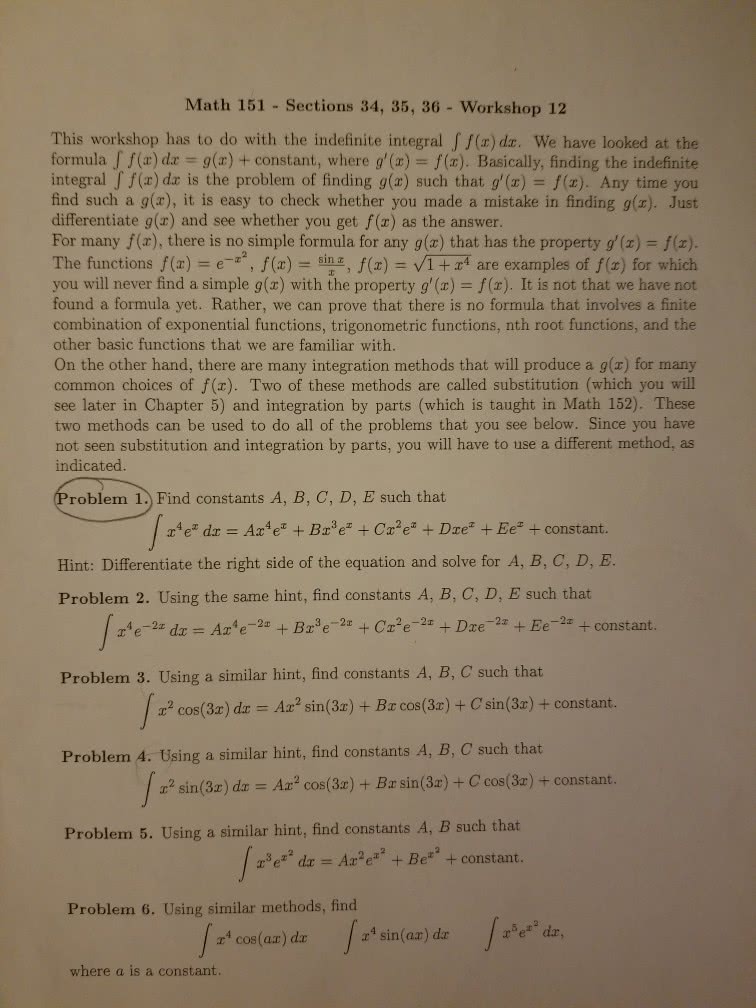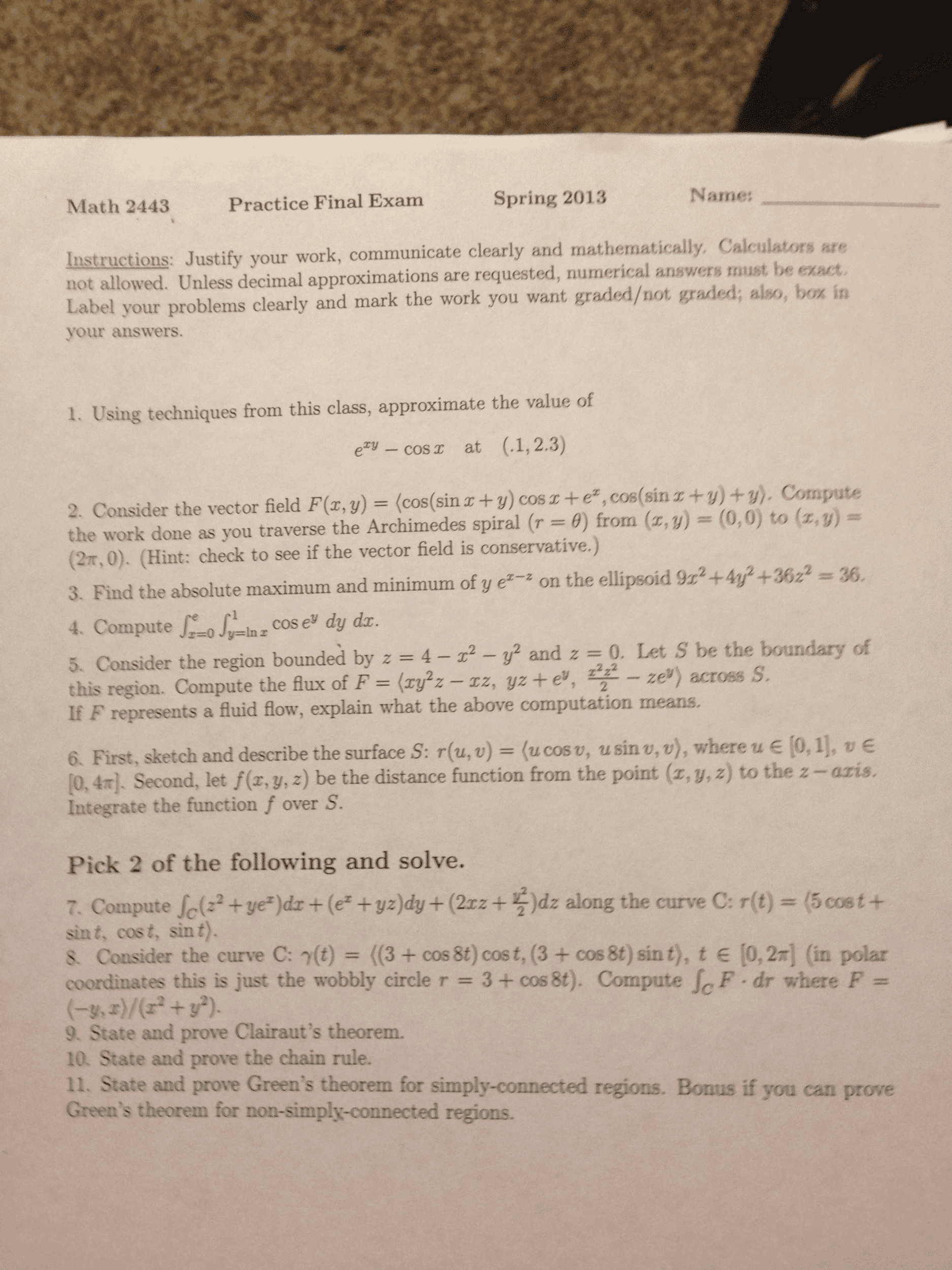Complete the first problem using the information above as well as the product rule.
Math 151 - Sections 34, 35, 36 - Workshop 1:2 This workshop has to do with the indefinite integral Jf(x) da. We have looked at the formula f f(x) dx = g(x) + constant, where g'(x) = f(x). Basically, finding the indefinite integral J f(x) dz is the problem of finding g(x) such that g,(z) = f(z). Any time you find such a g(x), it is easy to check whether you made a mistake in finding g(x). Just differentiate g(r) and see whether you get f(x) as the answer. For many f(x), there is no simple formula for any g(x) that has the property g'() f() The functions f(x) = e-z , f(x) = 012, f(x) = V1+14 are examples of f(x) for which you will never find a simple g(x) with the property g' (x)- f(x). It is not that we have not found a formula yet. Rather, we can prove that there is no formula that involves a finite combination of exponential functions, trigonometric functions, nth root functions, and the other basic functions that we are familiar with. On the other hand, there are many integration methods that will produce a g() for many common choices of f (x). Two of these methods are called substitution (which you will see later in Chapter 5) and integration by parts (which is taught in Math 152). These two methods can be used to do all of the problems that you see below. Since you have not seen substitution and integration by parts, you will have to use a different method, as indicated roblem 1. Find constants A, B, C, D, E such that re drAee + Ce + Dre" + Ee +constant. Hint: Differentiate the right side of the equation and solve for A, B, C, D, E Problem 2. Using the same hint, find constants A, B, C, D, E such that Problem 3. Using a similar hint, find constants A, B, C such that x2 cos(32) dz = Az? sin(3x) + Bx cos(3r) + C sin(3x) + constant. Problem A. Using a similar hint, find constants A, B, C such that z? sin(32) dz = Az? cos(3x) + Bx sin(3z) + Ccos(3x) + constant. Problem 5. Using a similar hint, find constants A, B such that ®3e® dr = Ax2ez" + Bez? + constant. Problem 6. Using similar methods, find r cos(ar) dz sin(az) de da where a is a constant



